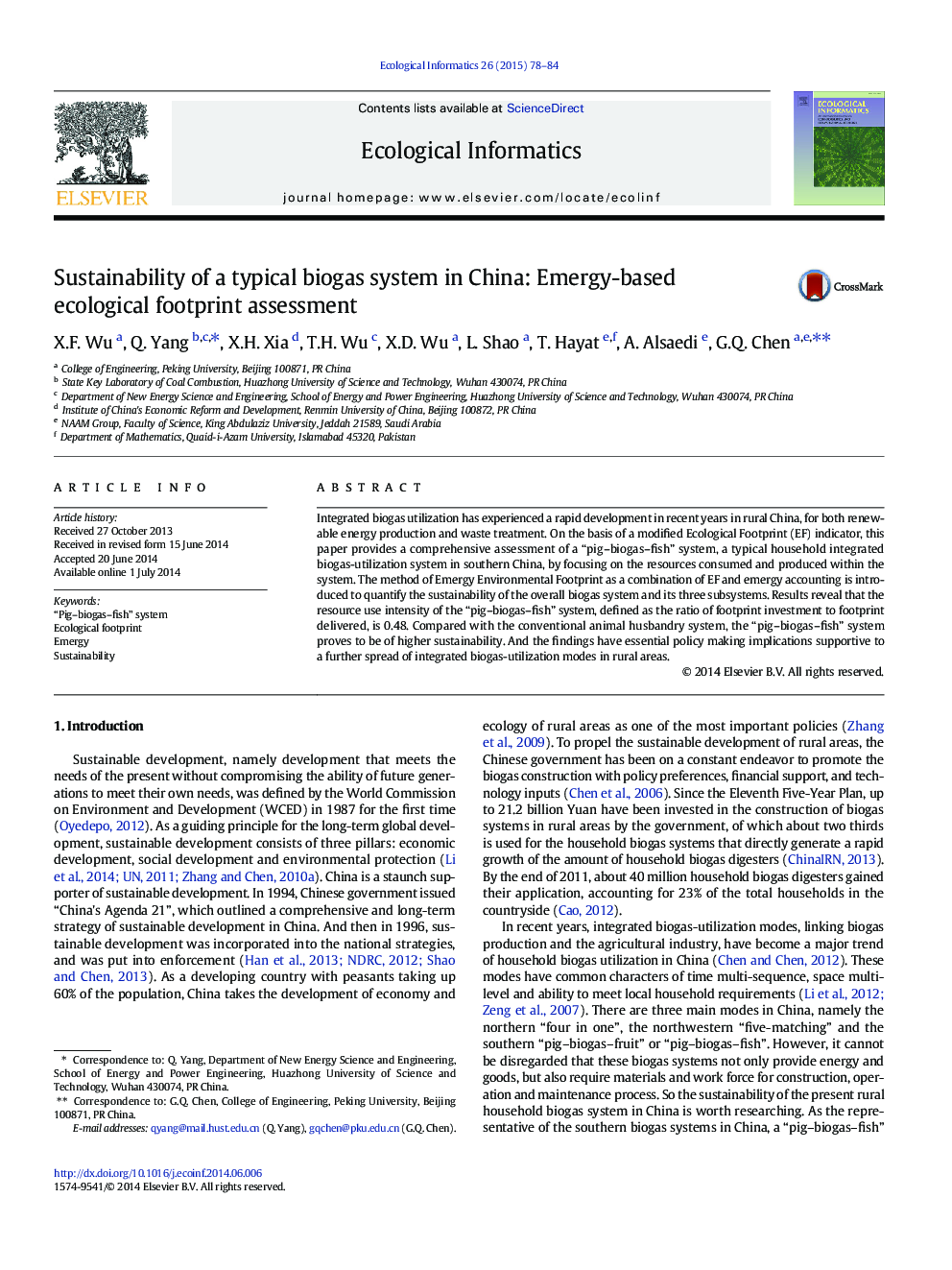| Article ID | Journal | Published Year | Pages | File Type |
|---|---|---|---|---|
| 4374858 | Ecological Informatics | 2015 | 7 Pages |
Abstract
Integrated biogas utilization has experienced a rapid development in recent years in rural China, for both renewable energy production and waste treatment. On the basis of a modified Ecological Footprint (EF) indicator, this paper provides a comprehensive assessment of a “pig-biogas-fish” system, a typical household integrated biogas-utilization system in southern China, by focusing on the resources consumed and produced within the system. The method of Emergy Environmental Footprint as a combination of EF and emergy accounting is introduced to quantify the sustainability of the overall biogas system and its three subsystems. Results reveal that the resource use intensity of the “pig-biogas-fish” system, defined as the ratio of footprint investment to footprint delivered, is 0.48. Compared with the conventional animal husbandry system, the “pig-biogas-fish” system proves to be of higher sustainability. And the findings have essential policy making implications supportive to a further spread of integrated biogas-utilization modes in rural areas.
Related Topics
Life Sciences
Agricultural and Biological Sciences
Ecology, Evolution, Behavior and Systematics
Authors
X.F. Wu, Q. Yang, X.H. Xia, T.H. Wu, X.D. Wu, L. Shao, T. Hayat, A. Alsaedi, G.Q. Chen,
